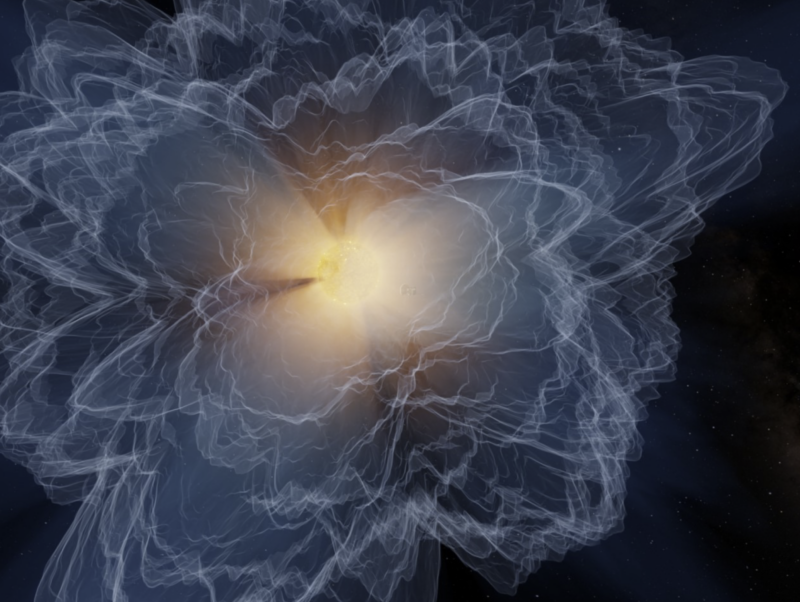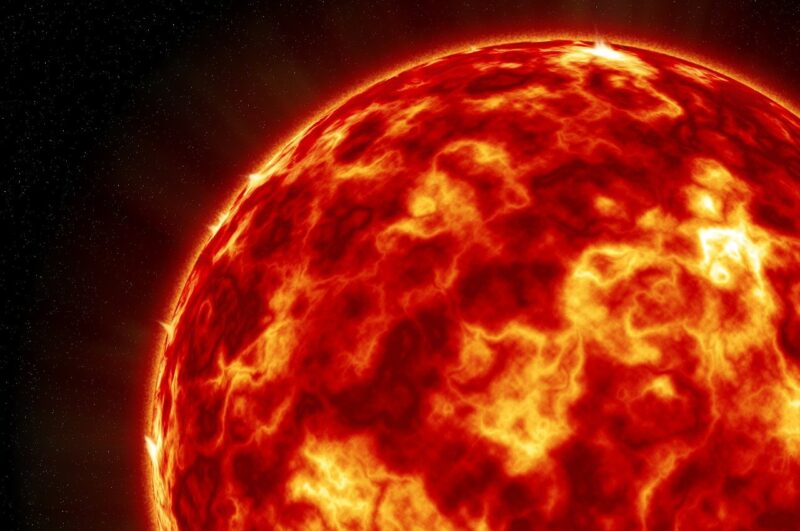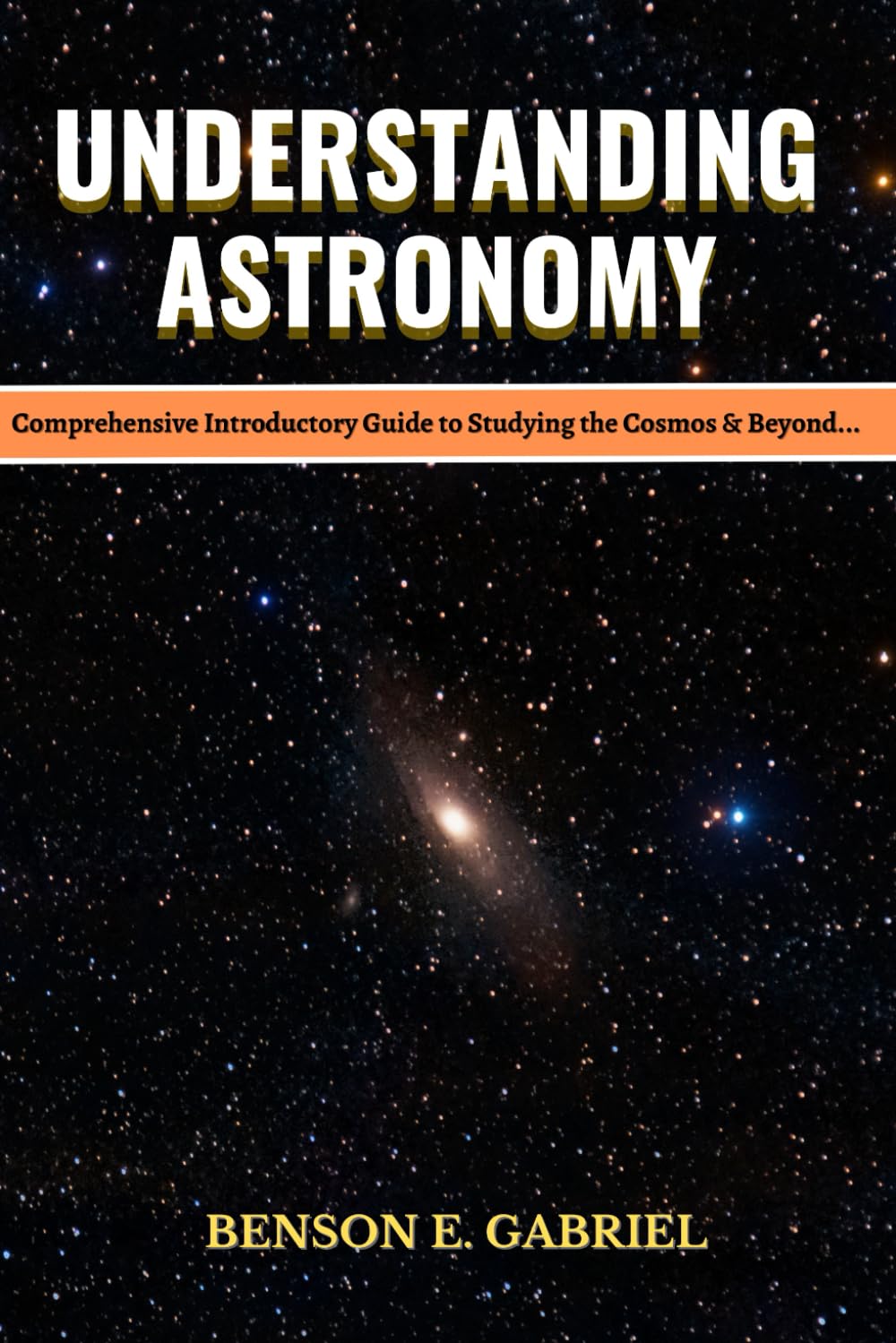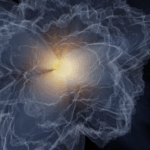Now Reading: Are primordial black holes hiding in plain sight?
-
01
Are primordial black holes hiding in plain sight?
Are primordial black holes hiding in plain sight?
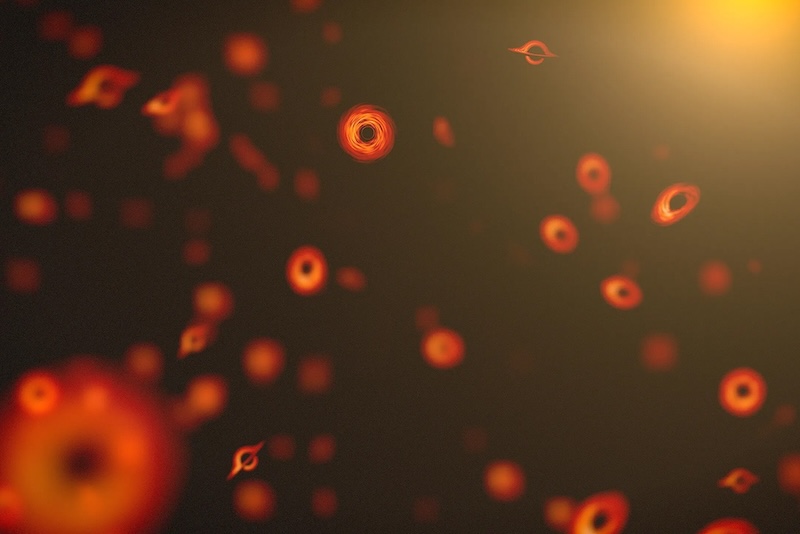
- Do primordial black holes exist? Scientists haven’t found them yet, but they’ve theorized about them for decades. They would have formed while the universe was rapidly expanding after the Big Bang.
- A new theory suggests we might be able to find traces of them. Their signatures could be in planetoids in space or even objects here on Earth such as rocks, metal or glass.
- The tiny black holes would leave larger objects like planetoids hollow on the inside. In much smaller objects, they would leave behind microscopic tunnels as they passed through.
Mysterious primordial black holes
Our universe is filled with black holes. In fact, astronomers now estimate there are about 40 quintillion of them in the observable universe. But for all the black holes that astronomers have found so far, none are primordial black holes. Those are small black holes that formed in the early universe long before the first stars. On December 2, 2024, researchers in the U.S. and China said those black holes might have left behind traces of their existence in unexpected ways. We might find their signatures in objects ranging from hollow planetoids (minor planets) in space to microscopic tunnels in rocks, metal and glass on Earth.
The researchers published their peer-reviewed theoretical study in ScienceDirect on September 19, 2024. They will also publish it in the December issue of Physics of the Dark Universe.

Where are primordial black holes?
Astronomers haven’t found any primordial black holes. Yet scientists have theorized they should exist for decades. According to current theory, primordial black holes, smaller than the black holes we are now familiar with, could have formed from regions of space that were denser than their surroundings. This would be when the universe was rapidly expanding after the Big Bang.
Some scientists think elusive dark matter might be composed of such black holes.
Most black holes we know of are the result of dying, collapsing stars. Primordial black holes would have been much less massive, but still dense. An analogy would be if the mass of a mountain was compacted into a region the size of an atom.
So where might they be?
Are primordial black holes ‘hiding in plain sight?’
The new study suggests they might be “hiding in plain sight” as it were. Their signatures could range from large to small, in a variety of objects, from large planetoids in space to much smaller objects – even microscopic – right here on Earth. Even if the black holes themselves are now gone, they could have left behind evidence of their existence.
In a planetoid, for example – a rocky body like a dwarf planet or large asteroid – the black hole could consume any liquid core. This would leave the planetoid mostly hollow inside. Conversely, if a really small black hole passed through a smaller object like a rock, or a piece of metal or glass, it might leave behind a straight hollow tunnel that could only be seen with a microscope.
Co-author Dejan Stojkovic at the University at Buffalo’s College of Arts and Sciences said:
The chances of finding these signatures are small, but searching for them would not require much resources and the potential payoff, the first evidence of a primordial black hole, would be immense. We have to think outside of the box because what has been done to find primordial black holes previously hasn’t worked.
Primordial black holes — small black holes born in the early universe — have been theorized but never observed ??
A new #UBuffalo study says they may have left behind hollow planetoids out in space or even microscopic tunnels in objects here on Earth ??https://t.co/C2Uqetvkgx
— UBuffalo Science News (@UBScience) December 3, 2024
How large could a hollow planetoid be?
Given the potential size differences of such hollow objects, the researchers wondered how big they could be. How large could a hollowed-out planetoid be before it collapsed in on itself? As it turned out, no larger than about 1/10 the diameter of Earth.
The premise is that a small primordial black hole could sometimes become trapped inside a planetoid. The black hole could absorb the liquid core, leaving the object hollow. As Stojkovic said:
If the object has a liquid central core, then a captured primordial black hole can absorb the liquid core, whose density is higher than the density of the outer solid layer.
But would the now-hollow planetoid be able to hold its shape, or would it collapse? The researchers said that it could retain its shape only if no larger than 1/10 the size of Earth. Stojkovic said:
If it is any bigger than that, it’s going to collapse. If the object’s density is too low for its size, that’s a good indication it’s hollow.
Black hole tunnels?
While primordial black holes might end up inside planetoids, even smaller ones could also pass through smaller objects, like rocks or pieces of metal or glass right here on Earth. In that case, they would leave behind microscopic tunnels instead of hollowing out the object. Those tunnels could be extremely tiny in thickness, measured in microns.
It would be possible to use objects, like a slab of rock, as black hole detectors. Scientists could monitor them for the sudden appearance of new tunnels. The odds of detecting a passing black hole this way would be small, to say the least. It might be better to look for already existing tunnels in material that is hundreds to billions of years old. But even then, chances would be slim. The researchers estimated the probability of finding such a tunnel at 0.000001.
Yet it would cost very little to do these kinds of experiments and studies. As Stojkovic said:
You have to look at the cost versus the benefit. Does it cost much to do this? No, it doesn’t.

Could black holes pass through … people?
If microscopic black holes could pass through objects like rocks, what about people? The researchers said that it would be unlikely during a person’s lifetime. And even if it did happen, it wouldn’t be noticeable. If a black hole did pass through a human body, it wouldn’t destroy it or leave a tunnel or anything. Why? Because human tissue has some tension in it. The black hole would contain a huge amount of kinetic energy. But it wouldn’t release any of it into a person because it is moving way too fast. As Stojkovic explained:
If a projectile is moving through a medium faster than the speed of sound, the medium’s molecular structure doesn’t have time to respond. Throw a rock through a window, it’s likely going to shatter. Shoot a window with a gun, it’s likely to just leave a hole.
Well, that’s a relief.
New theoretical physics framework needed
The whole concept of tiny black holes whizzing about sounds bizarre. But that doesn’t mean scientists shouldn’t look for them. Stojkovic said:
The smartest people on the planet have been working on these problems [seemingly implausible physics concepts] for 80 years and have not solved them yet. We don’t need a straightforward extension of the existing models. We probably need a completely new framework altogether.
Bottom line: Do tiny primordial black holes exist? A new theoretical study says we might find evidence of them in planetoids or even objects like rocks here on Earth.
Read more: More evidence for black holes as the source of dark energy
Read more: Dark matter black holes could make Mars wobble
The post Are primordial black holes hiding in plain sight? first appeared on EarthSky.
Stay Informed With the Latest & Most Important News
Previous Post
Next Post
-
 012024 in Review: Highlights from NASA in Silicon Valley
012024 in Review: Highlights from NASA in Silicon Valley -
 02Panasonic Leica Summilux DG 15mm f/1.7 ASPH review
02Panasonic Leica Summilux DG 15mm f/1.7 ASPH review -
 03From Polymerization-Enabled Folding and Assembly to Chemical Evolution: Key Processes for Emergence of Functional Polymers in the Origin of Life
03From Polymerization-Enabled Folding and Assembly to Chemical Evolution: Key Processes for Emergence of Functional Polymers in the Origin of Life -
 04How New NASA, India Earth Satellite NISAR Will See Earth
04How New NASA, India Earth Satellite NISAR Will See Earth -
 05And Thus Begins A New Year For Life On Earth
05And Thus Begins A New Year For Life On Earth -
 06Astronomy Activation Ambassadors: A New Era
06Astronomy Activation Ambassadors: A New Era -
07SpaceX launch surge helps set new global launch record in 2024












